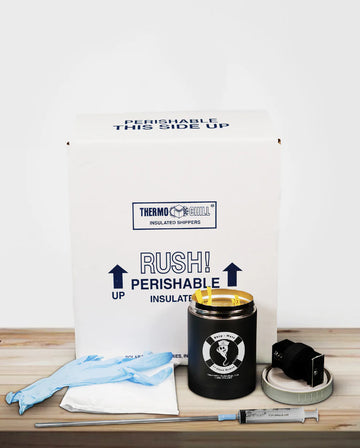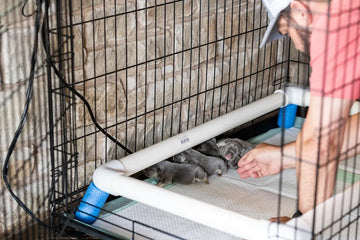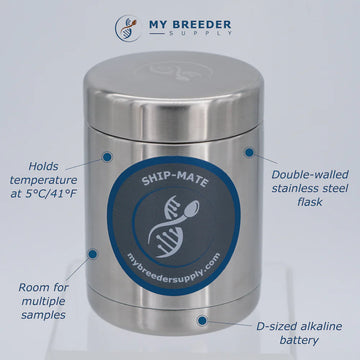How to Detect Early Signs of Labor in Pregnant Dogs
by Phenyx Media on Jul 02, 2024

As a dog owner, it's essential to be aware of the signs of labor in your pregnant dog.
Knowing when your furry friend is about to give birth can help you prepare and ensure a safe delivery.
Nesting Behavior
One of the earliest signs of labor in pregnant dogs is nesting behavior. You may notice your dog:
- Searching for a quiet, secluded spot
- Digging or scratching at bedding or furniture
- Rearranging blankets or toys to create a cozy space
This instinctive behavior is a clear indication that your dog is preparing for the arrival of her puppies.
Decreased Appetite
As labor approaches, your pregnant dog may experience a decrease in appetite. This is normal and can occur anywhere from 12 to 24 hours before the onset of labor.
However, if your dog refuses to eat for more than 24 hours or shows signs of distress, consult your veterinarian.
Drop in Body Temperature
Another early sign of labor is a drop in your dog's body temperature. About 12 to 24 hours before labor begins, your dog's temperature may drop below 100°F (37.8°C).
To monitor this, take your dog's temperature twice a day during the final week of pregnancy. Use a rectal thermometer for the most accurate reading.
Restlessness and Pacing
As labor approaches, your dog may become restless and pace around the house. This behavior is often accompanied by panting and may be more noticeable in the 12 to 24 hours before labor starts.
Provide a calm, quiet environment for your dog during this time.
Vaginal Discharge
In the hours leading up to labor, your dog may experience vaginal discharge.
This discharge may be clear, pink, or slightly bloody and is a normal part of the labor process. If the discharge is dark green or foul-smelling, contact your veterinarian immediately, as this could indicate a complication.
Being aware of the early signs of labor in pregnant dogs is crucial for ensuring a safe and smooth delivery.
By monitoring your dog's behavior, appetite, body temperature, and vaginal discharge, you can better prepare for the arrival of the puppies.
If you have any concerns or notice signs of distress, always consult your veterinarian for guidance and support.
FAQs on Early Signs of Labor in Pregnant Dogs
How long does labor typically last in dogs?
The duration of labor varies among individual dogs, but it generally lasts between 3 to 12 hours. However, it's important to monitor your dog closely and contact your veterinarian if labor lasts longer than 24 hours or if your dog appears to be in distress.
How can I create a comfortable space for my dog to give birth?
Provide a quiet, warm, and secluded area for your dog to give birth, such as a whelping box or a cozy corner in a room. Line the area with clean, soft bedding and ensure that your dog has easy access to fresh water.
What should I do if my dog's body temperature drops but labor doesn't start?
If your dog's body temperature drops below 100°F (37.8°C) but labor doesn't begin within 24 hours, consult your veterinarian. This could indicate a problem that requires medical attention.
How frequently should I check on my dog during labor?
Once labor begins, check on your dog every 15 to 30 minutes to ensure that the birthing process is progressing normally. If you notice any signs of distress or prolonged labor, contact your veterinarian immediately.
When should I intervene during the birthing process?
In most cases, it's best to let nature take its course and allow your dog to give birth without intervention.
However, if you notice any of the following signs, contact your veterinarian:
- Labor lasts more than 24 hours
- Your dog is straining for more than 60 minutes without producing a puppy
- There is a gap of more than 2 hours between puppies
- Your dog appears to be in severe pain or distress
- There is excessive bleeding or dark green discharge




